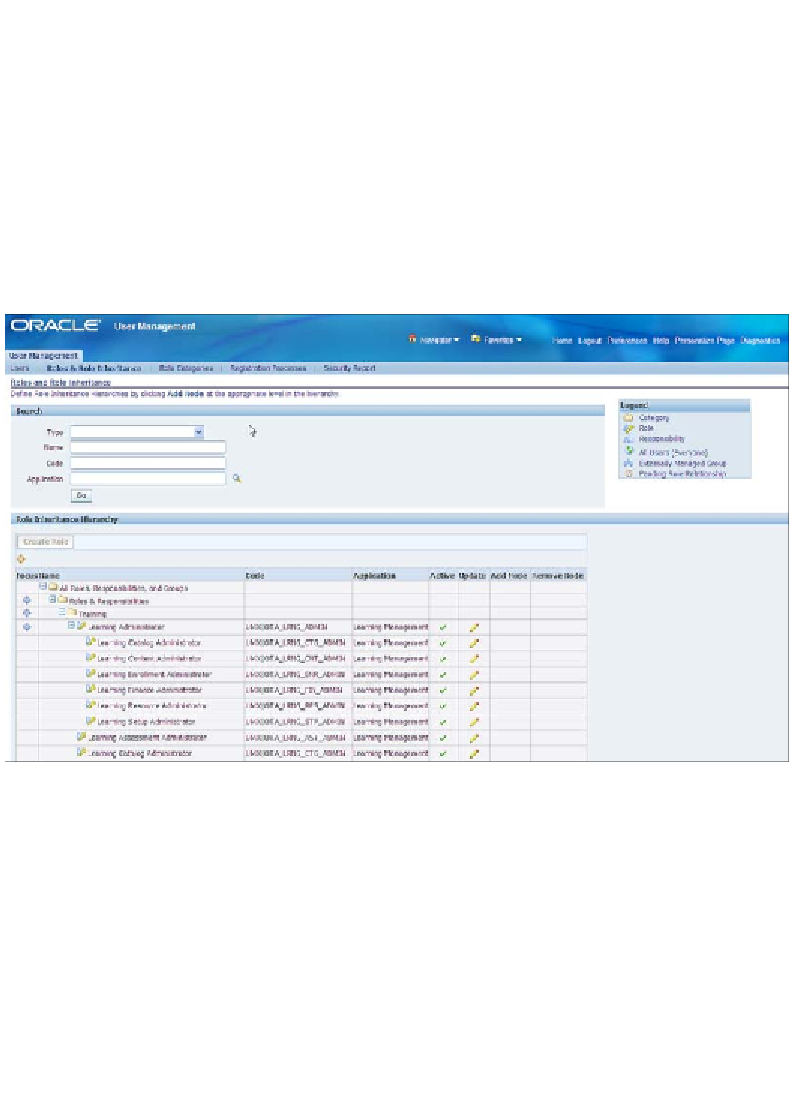Database Reference
In-Depth Information
Aggregating responsibilities into roles
Since 11.5.10, E-Business Suite has had a product called
User Management
(
UMX
)
that allows for grouping responsibilities together into a role. You may find that
any given user had to be given many responsibilities. For example, if you were a
manager in the HR Department, you would have one responsibility for your work
as a manager, and another for your work as an HR Professional. Your work as an
HR Professional may be to provide HR Support for the Sales Department. You may
have access to the same screens in both these responsibilities. When logging in with a
"Manager" responsibility, you get access to your subordinates. When logging in with
an "HR Professional" responsibility you get access to the HR records of people in the
Sales Department. The following is a screenshot showing the role inheritance:
In order to navigate to the role definitions, log in using a User Management
responsibility and click on the
Role and Role Inheritance
tab.
What is the difference between a role and a responsibility? The
MetaLink Note
290525.1
states:
"Responsibilities can now be considered a special type of role that represents the
set of navigation menus contained within an application. Therefore, responsibilities
loosely represent an application itself, whereas roles can be used to determine what
parts of that application (and data therein) a user has access to. This represents
a shift in the definition of a responsibility in Oracle Applications. Previously, a
responsibility has been used not only to define the application navigation menus,
but also to confer privileges and permissions within that application.

Search WWH ::

Custom Search